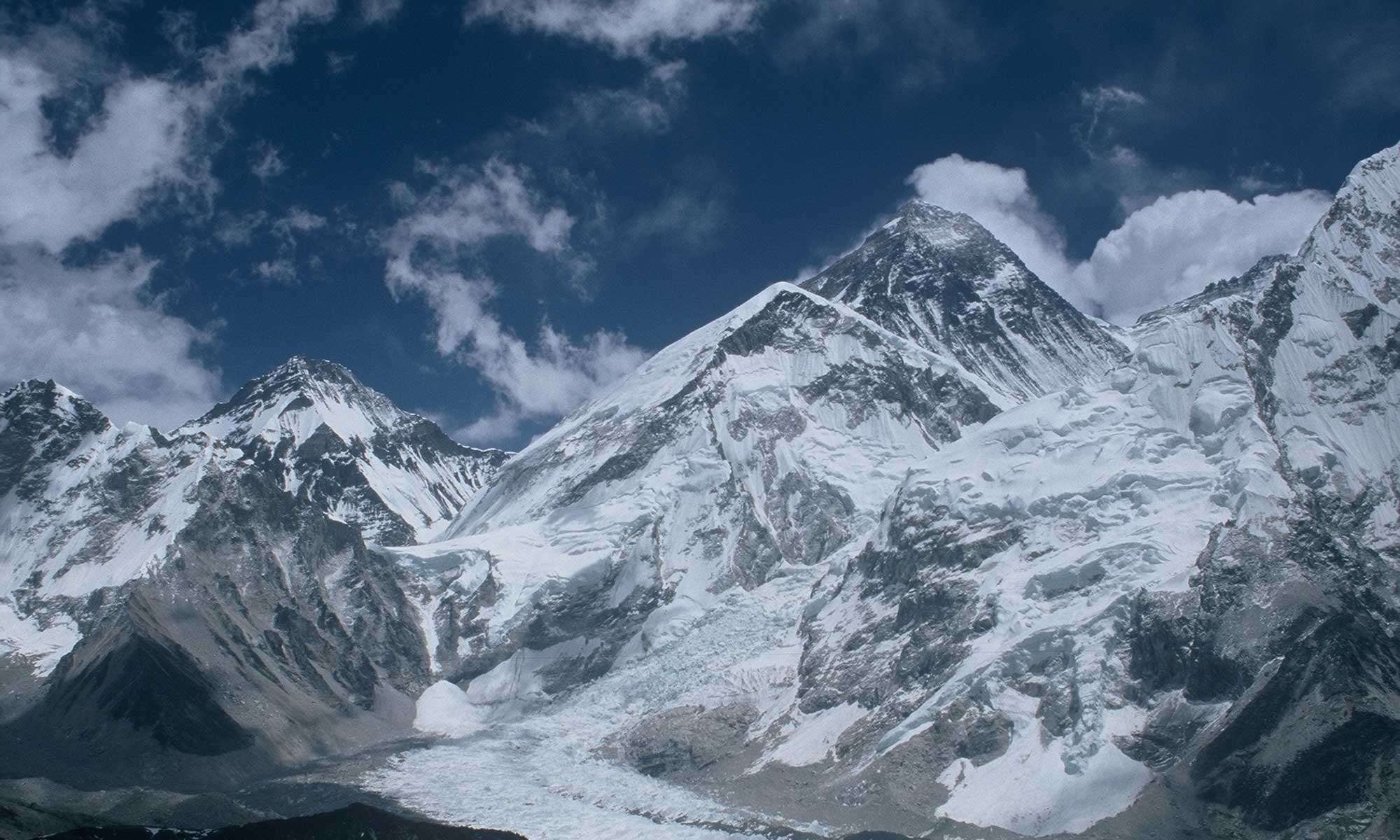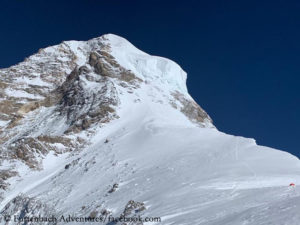The pictures and videos that have been circulating in social media for days about the summit day on K2 are disturbing. In them, mountaineers can be seen climbing over the corpse of Pakistani climber Muhammad Hassan below the “Bottleneck,” the key passage at around 8,000 meters.
There are so many questions surrounding his death that the regional government of Pakistan’s Gilgit-Baltistan province has set up a commission of inquiry. Within two weeks, it is to clarify what happened on 27 July in the summit zone of the second highest mountain on earth. What exactly happened to Hassan? Was everything done to save his life? Was he adequately equipped for his work as a High Altitude Porter? Should he even have been up there based on his mountaineering skills?
Cause of death unclear
ExplorersWeb’s Angela Benavides has gathered voices from the summit day, some of which paint a contradictory picture. Above all, what happened to Hassan is unclear. Was he hit by an avalanche that had broken loose during the night from the huge block of ice above the Bottleneck? Did he fall into a crevasse? Did he hit his head on a rock, destroying his breathing mask? And how long did he live? In a drone video shot by cameraman Philip Flämig, who was filming on K2 on behalf of Austrian expedition operator Furtenbach Adventures, a man can be seen tending to Hassan alone, after daybreak. It looks like he is performing cardiac massage.
Muhammad Hassan worked for the Pakistani agency Lela Peak Expedition and assisted the rope-fixing team that day. The agency’s head, Anwar Syed, confirmed this to me. A relative of Hassan’s was with Muhammad when he slipped while climbing the Bottleneck, Syed said: “His relative and another pulled him up, and after a few moments he passed away. So actually there was not enough time for his rescue.”
Other testimony contradicts this account of a quick death. “Through the narration of three different eyewitnesses, I can report that this man was still alive while about 50 people were walking past him. This is also visible in the drone footage,” cameraman Flämig told Austrian newspaper Der Standard. “In part, the statements go so far that the people who came back from the summit still encountered a living person.”
Human gesture
Apparently, this was the first time Hassan had been so high on the mountain. His widow reported to Flämig and the Austrian climber Willi Steindl during their condolence visit that her husband had so far only carried equipment to K2 base camp, writes Benavides. Muhammad had only climbed further up this time because he needed more money to have his sick mother cared for, his wife said.
Hassan leaves behind her and three small children. They are now without a husband, without a father – and without a breadwinner. In Pakistan, High Altitude Porters are usually only insured for the equivalent of around 1,500 U.S. dollars in the event of death. Flämig and Steindl collected money and delivered it to Hassan’s widow, even though they themselves had not witnessed the accident at close quarters. It was a human gesture by people who were actually not involved. After an incident in which many of the people involved apparently placed their own success above prudence and humanity.
Luck prevented a major catastrophe
On the day Hassan died, nearly 200 climbers were attempting to reach the summit of K2 at 8,611 meters, about half were at the top – among them the Norwegian Kristin Harila and her Nepalese mountain guide Tenjen Sherpa, who thus completed their project “As fast as possible to all eight-thousanders” within three months and one day.
The other half of the summit aspirants – among them the Furtenbach team – turned back, mainly because of too high avalanche danger. Several smaller avalanches went off above the Bottleneck, where a long traffic jam had formed for hours. Had it been a large avalanche, not only Hassan would have lost his life, but many more.
Diffusion of responsibility
Those who reached the summit that day climbed over the Pakistani at least once, most even twice – on the ascent and descent. Even if, as remains to be clarified, it really was not possible to save Hassan, wouldn’t respect for him have dictated that his body be placed in a crevasse or at least a short distance down the mountain? This question is not new. What has happened again and again for many years in the summit zone of Mount Everest is being repeated on K2. Rescue operations like that of Nepalese mountain guide Gelje Sherpa last spring – he convinced his Chinese client to forgo the summit to save a Malaysian climber in distress – are the exception. Most simply climb by.
There seems to be less and less room for humanity the higher it goes and the more people are on the move. In social psychology, this phenomenon – which, by the way, does not only exist in the high mountains – is called diffusion of responsibility. Simplified, it can be described like this: When too many people are there to take responsibility, often no one ends up taking it on. Because everyone expects everyone else to do it. This is sad and can cost someone in need their life.
Update August 10: Norwegian Kristin Harila has defended herself against the accusation of failing to help Hassan. She spoke of a “tragic accident”: “This was no one’s fault, you cannot comment when you do not understand the situation (…) (Tenjen) Lama, myself and especially (her cameraman) Gabriel (Tarso), did everything we could for him at the time. This happened at the most dangerous part of the deadliest mountain in the world, and you should remember that at 8000+ meters, your survival instincts impact the decisions you make.”
According to her words, Lama, Gabriel and she immediately tried to rescue Hassan, who was hanging upside down in the rope. Eventually, they managed to turn the Pakistani in the right direction, she said, adding that Hassan was not wearing a down suit or a breathing mask. According to her words Tarso gave him oxygen from his bottle, and the Portuguese remained with Hassan for a total of two and a half hours. She and Lama had continued to climb because they had received the news that further ahead members of the rope-fixing team were in trouble because of an avalanche, but they were okay. Both then continued to ascend, she wrote: “Considering the amount of people that stayed behind and that had turned around, I believed Hassan would be getting all the help he could, and that he would be able to get down.”



